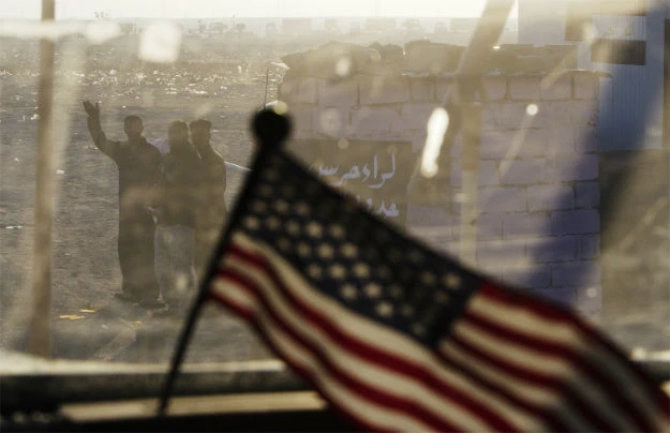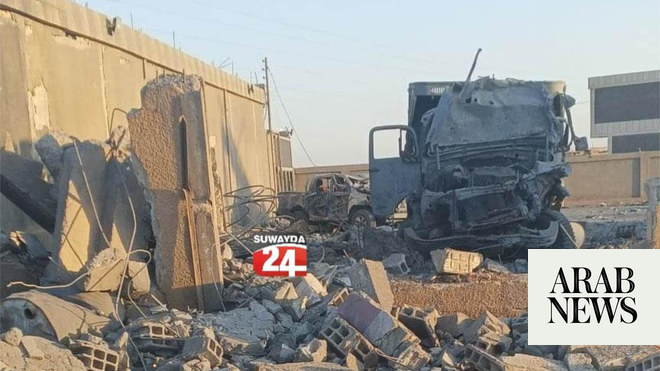
The political order that prevailed in the Middle East for centuries came to an end after the First World War. The victors of the war designed the region according to their own priorities.
Two British authors, David Fromkin and James Barr, have published two different books that provide details on how the Middle East was shaped after the First World War. The title of David Fromkin’s book is “A Peace to End All Peace,” and argues that the Versailles peace treaty put an end to peace in the Middle East and that the region could not recover from the calamity. The title of James Barr’s book is “A Line in the Sand.”
Both books describe the little care with which the present borders were drawn in the Middle East after the First World War, irrespective of tribal, sectarian and geographic considerations. We are now suffering from the consequences of this hasty and careless work. After more than a century, we may expect that the borders will be stabilized and neighboring countries will solve their problems in peaceful ways.
The US arrival in the Middle East dates back to the aftermath of the Second World War, especially with the emergence of the Israeli-Palestinian conflict. More than 70 years after its arrival, the US influence in the Middle East is now diminishing despite Washington’s claims that it is not going to withdraw from the region any time soon. It hesitated at one stage about whether it should increase its presence in the Pacific Rim at the expense of its presence in the Middle East. However, international relations have gained importance in the region that it has become almost impossible for Washington to reduce its military presence. On the other hand, China is steadily increasing its economic and diplomatic weight in the region.
Is the Middle East on the threshold of a restructuring? China, which was almost absent in the region, has started to creep in only recently. It is now playing concrete roles in the Middle East. Beijing has so far avoided stationing a military presence in the region. However, as China further establishes itself as an economic actor it will also increase its diplomatic weight, and ultimately it may need to station soldiers to protect its interests.
China’s initiative may also counterbalance America’s role in the Middle East. US interference in Iraq has changed several paradigms in the region. On the other hand, the Iraq war caused enormous destruction of the infrastructure of the country. Estimates of the financial cost to the US vary between $1.1 trillion and $3 trillion.
The human cost is estimated to be 5 million orphans and 100,000 Iraqi lives. More than 7,000 US service members and more than 8,000 contractors have died. Iraq is practically divided into three, with Kurds in the north, Shiites in the south, and Sunnis in the middle. Daesh became the worst headache for the region and for distant countries such as Mali and Nigeria, and the group is still far from being eliminated.
The more the diplomatic and economic presence of China increases, the more US influence will be balanced by China.
Yasar Yakis
During the last Iraq war, the author of this article was Turkiye’s foreign minister when the Turkish parliament refused the movement of US troops through Turkish territory for the purpose of opening a new American front in the north of Iraq. This decision did not change the course of events in Iraq, but at least the Turkish parliament proved its maturity by challenging a country such as the US in the Middle East. At a later stage, Turkiye had again to yield to US pressure, but this pressure died away slowly.
China is making efforts to mediate between two important Middle Eastern countries — Saudi Arabia and Iran. Both will gain from an increase in stability. All sources of conflict will not of course be eliminated overnight, but they may fade away one after the other as time goes by. For years, Riyadh and Tehran had fluctuating relations. China’s present mediation has the potential to open a new era, because after the turmoil that the Middle East has been through, a restructuring of relations has become almost a must.
Saudi-Iran relations suffered a breakdown in 2016 when rioters in Iran ransacked the Saudi Embassy in Tehran and the Saudi consulate in Mashhad.
China’s efforts to reconcile the countries of the Gulf region date back to 2020. It submitted to the UN Security Council a proposal for security and stability in the Gulf region because it has important stakes in the countries of the region, both in trade volume and in the context of the Belt and Road Initiative.
A more recent Chinese initiative took place on Dec. 7, 2022, when the Chinese leader, Xi Jinping, visited Saudi Arabia and signed more than 20 agreements — worth $29.3 billion in the energy, transport and housing sectors.
China has given both Saudi Arabia and Iran the status of “comprehensive strategic partners.” There are no other Middle Eastern countries that enjoy such a status. In view of the biting economic embargo imposed by the US on Iran, this gesture by China will bring relative relief to Iran by increasing trade volume.
In light of the Benjamin Netanyahu government’s diminishing strength, the circumstances have also become ripe for Saudi Arabia to bring back to the agenda the late King Abdullah’s Arab Peace Initiative of 2002 as a solution to the Palestinian issue.
China is also a country that remains equidistant between East and West, and gives a helping hand when it becomes necessary, thus avoiding staining its hands. The more the diplomatic and economic presence of China increases, the more US influence will be balanced by China. We may be on the threshold of a more stabilized Middle East but we are not yet there.
• Yasar Yakis is a former foreign minister of Turkiye and founding member of the ruling AK Party.
Twitter: @yakis_yasar












